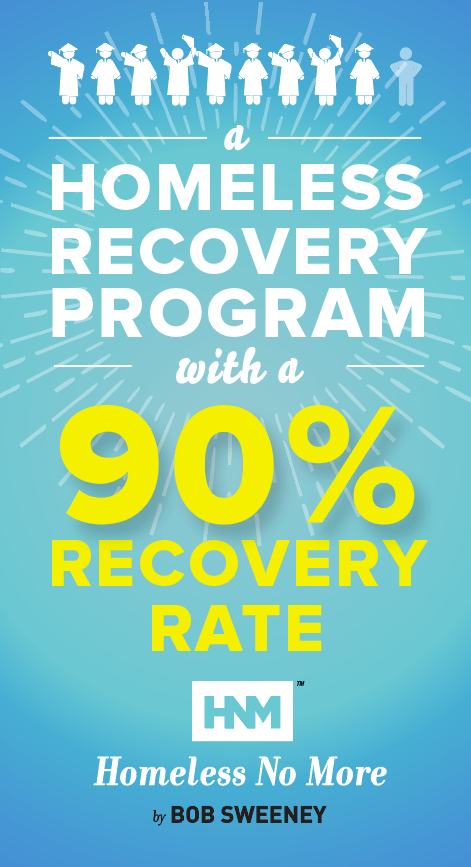The State of Homelessness in Dallas
Dallas, a city known for its rich history and economic prosperity, faces a significant challenge with homelessness. Recent reports shed light on the dynamics of this issue, revealing both progress and areas needing attention. In 2022, the Metro Dallas Homeless Alliance reported a decrease in overall homelessness, a testament to the community’s efforts and various prevention and housing intervention initiatives. The Point-in-Time count identified 4,410 individuals experiencing homelessness in Dallas and Collin counties, marking the lowest count since 2019 1.
Despite these improvements, challenges persist, particularly with chronic homelessness, which has seen an increase, reflecting national trends 2 The demographic analysis shows that African Americans represent a disproportionate share of the homeless population in Dallas and Collin counties, indicating systemic inequities that need addressing 3.
Get Free Our Report: “7 Steps That Get 90% Off The Street”
The fight against homelessness in Dallas is ongoing, but with the combined efforts of organizations likeHomeless No More, community programs, and the support of individuals like you, we can continue to make strides toward a future where everyone who wants to recover from homelessness has the resources to do so. The challenges are significant, but so are the opportunities for impact. Let’s work together to build a more inclusive and supportive Dallas for all.
For more information and to get involved, CONTACT US and and learn how you can contribute to a cause that’s making a real difference in people’s lives.
Homelessness in Dallas Today: A Snapshot
In the bustling city of Dallas, alongside the thriving culture and booming economy, there’s a contrasting narrative that often goes unnoticed by many — homelessness. This complex issue continues to challenge our community, but recent efforts have begun to shine a ray of hope on this pressing matter.
The Current State
At the end of 2023, Dallas and Collin Counties have seen a promising decline in homelessness, reaching the lowest count in five years with 4,244 individuals identified during the annual Point-in-Time count. This significant decrease, including a 14% decline in unsheltered homelessness and a notable 32% drop in chronic homelessness, highlights the effectiveness of targeted efforts and resources aimed at addressing the needs of our unhoused neighbors 4.
Efforts by Housing Forward, alongside the All Neighbors Coalition, have led to this remarkable progress, emphasizing the power of coordinated resources, enhanced partnerships, and a steadfast commitment to racial equity. The Dallas R.E.A.L. Time Rapid Rehousing Initiative, in particular, has been a game-changer, contributing to an 18% increase in the number of neighbors moved into housing thanks to the addition of vital staff and resources 5.
Challenges Ahead
Despite these strides, the road ahead remains steep. The White House has recently spotlighted Dallas as one of the major cities for a new initiative aimed at reducing unsheltered homelessness by 25% by 2025. This initiative, ALL INside, acknowledges the intertwined challenges of housing scarcity, mental health, and substance abuse, and seeks to bolster local efforts with federal support (Spectrum Local News).
In response to this ongoing challenge, Mayor Eric Johnson formed the Mayor’s Task Force on HOPE — a dedicated group tasked with developing concrete solutions to reduce homelessness and foster healthier, safer communities in Dallas 6.
How You Can Help
Homeless No More stands at the forefront of this cause, working tirelessly to address today’s challenges and drive lasting change. But we can’t do it alone.
Join us in our mission to uplift and support our most vulnerable neighbors. Your contribution to Homeless No More can make a significant difference in the lives of those struggling with homelessness in Dallas. Whether it’s through donations, advocacy, or volunteerism, your involvement is crucial to sustaining the momentum and ensuring no one is left behind.
In unity, there’s strength, and together, we can continue to make progress, turning hope into reality for many. Be a part of the solution and see how you can make a difference today.

Homelessness in Dallas 2023
Reflecting on the state of homelessness in Dallas in 2023 offers a glimpse into both the progress made and the challenges that persist in our community. As we continue to delve into the statistics and stories from this past year, we uncover a complex picture of resilience, improvement, and ongoing need.
The 2023 Landscape
In 2023, Dallas saw a mix of hopeful trends and areas requiring continued attention. As mentioned above, the Point-in-Time count reported a notable reduction in the number of individuals experiencing homelessness, with 4,244 people counted across Dallas and Collin Counties. This represents the lowest count in five years, signaling positive strides towards addressing this critical issue 7.
A 14% decline in unsheltered homelessness, alongside a significant 32% decrease in chronic homelessness, underscored the effectiveness of targeted interventions and resources dedicated to the most vulnerable in our community. These successes reflect a concerted effort to enhance the coordination of services and the scaling of models proven to aid in rehousing and supporting those affected by homelessness 8.
Persistent Challenges
Despite these encouraging trends, Dallas continues to face challenges in combating homelessness. The issue is multifaceted, influenced by a myriad of factors including contributing factors like economic instability, affordable housing shortages, and health disparities. Poverty alone is not the cause of homelessness. And because poverty isn’t the only trigger, money alone cannot cure homelessness. Mental health issues, addiction struggles (such as alcohol and drug abuse) and relationship issues are triggers of homelessness that work alongside poverty to displace people from their homes. The initiative by the White House, ALL INside, highlights Dallas among major cities aiming to reduce unsheltered homelessness by 25% by 2025. This national recognition underscores the critical need for innovative solutions and partnerships to address the root causes of homelessness 9.
Looking Forward
The data from 2023 serves as both a beacon of hope and a call to action. It reminds us of the impact of our collective efforts and the work still required to ensure every individual in Dallas has access to safe, affordable housing.
Where are the Most Homeless in Dallas?
In Dallas, areas with the highest concentrations of homeless individuals often coincide with regions where resources are most available or where communal and public spaces provide some level of shelter and anonymity. Based on observations and reports, downtown Dallas, including areas around shelters and service centers like Dallas LIFE Homeless Recovery Center, tends to have a higher visibility of homelessness. Other areas noted for significant homeless populations include pockets of South Dallas and vicinities around emergency shelters, soup kitchens, and day labor centers.
Factors Contributing to Concentrations
Several factors contribute to the concentration of homeless individuals in specific areas of Dallas:
- Accessibility to Services: Areas that offer shelter, food, and healthcare services naturally attract individuals seeking these resources. Downtown Dallas, with its array of homeless services, becomes a central hub for those in need.
- Public Spaces: Public parks, underpasses, and abandoned buildings in certain neighborhoods provide makeshift shelter for individuals without housing. These spaces, often in more urbanized areas, offer some degree of protection from the elements.
- Economic Disparities: Areas with lower housing costs or higher rates of poverty can see increased homelessness due to economic instability among residents. The correlation between affordable housing shortages and homelessness highlights the broader issue of economic disparity in Dallas.
- Transportation: Locations near major transit routes are also common areas for homeless populations, as access to transportation is crucial for mobility, especially for accessing services and employment opportunities.
Addressing the root causes of homelessness, including drugs, alcohol, poverty, broken relationships, and mental illness — plus contributing factors like the lack of affordable housing, insufficient mental health services, and economic instability, is crucial for reducing these homeless concentrations and supporting individuals towards stable housing solutions.
For more on the 5 root triggers of Homelessness, click here.
Hotel Vouchers for Homeless Dallas
In Dallas, hotel voucher programs have emerged as a crucial temporary solution for the homeless, particularly highlighted by efforts from organizations like Elevate North Texas and larger city-wide initiatives. Elevate North Texas specializes in providing emergency shelter for youth through partnerships with hotels, focusing on those aged 18 to 24 who may be fleeing unsafe or toxic home environments. Their program ensures immediate needs for safety, housing, and food are met, while also offering resources for long-term stability 10
Additionally, a significant partnership in North Texas has aimed to provide shelter for a substantial portion of Dallas County’s homeless population by utilizing a blend of temporary and permanent housing solutions. This effort, involving a collaboration between the city of Dallas, Dallas County, and various organizations, seeks to leverage vouchers among other resources to house over 2,600 individuals. The initiative is part of a broader strategy to combat homelessness with a mix of immediate relief and sustainable support, indicating a concerted effort to provide not just shelter but pathways to self-sufficiency 11.
The City of Dallas’s Office of Homeless Solutions has also been proactive through its R.E.A.L. Time Rehousing Initiative, aiming to house over 2,700 individuals by the end of 2023, with an expanded goal to assist 6,000 by 2025. This initiative underscores the city’s commitment to not only providing immediate housing solutions but also integrating services designed to ensure long-term stability for those affected by homelessness 12.
These programs, while offering vital support, underscore the complexity of addressing homelessness. They provide immediate relief and safety, access to personal hygiene facilities, and a sense of privacy not always available in communal shelters. However, they also highlight the transient nature of such solutions and the need for sustainable, long-term strategies to address the root causes of homelessness, including drugs, alcohol, poverty, broken relationships, and mental illness along with the contributing factors of affordable housing, economic stability, and accessible healthcare.
For more information on how to support or get involved with these initiatives, you can visit the respective organizations’ websites:
Dallas Homeless Solutions
Dallas has implemented a comprehensive approach to tackle homelessness, led by the City of Dallas Office of Homeless Solutions (OHS). Their initiatives are grounded in a Four-Track strategy designed to not only provide immediate relief to the homeless population but also to lay the foundation for long-term sustainability by increasing the supply of affordable housing. This strategy includes expanding shelter capacity, operating inclement weather shelters, subsidizing supportive housing, and investing in facilities combatting homelessness 13
Housing Forward, along with the All Neighbors Coalition, has also played a crucial role in addressing homelessness in Dallas. Their annual State of Homelessness Address reported a reduction in homelessness, with a notable 14% decline in unsheltered homelessness and a 32% decline in chronic homelessness between 2022 and 2023. These results underscore the impact of greater alignment of resources, enhanced partnerships, and a focus on racial equity in effectively serving and housing the homeless population. The success of initiatives like the Dallas R.E.A.L. Time Rapid Rehousing Initiative has contributed to this progress, enabling the system to serve and house more people than ever before 14.
Homeless No More fits into these solutions as a critical partner and facilitator in the journey toward ending homelessness in Dallas. By supporting and aligning with the city’s initiatives and strategies, Homeless No More amplifies the reach and effectiveness of these programs. While homeless individuals struggle with day-to-day survival, Homeless No More – in conjunction with shelter, food and clothing services – provides the framework for permanent recovery from homelessness. By implementing a long-term solution, Dallas can go beyond cleaning up the streets to addressing the triggers of homelessness directly. Through fundraising and advocacy Homeless No More contributes to the collective efforts to provide habitable living environments, support services, and pathways to sustainable housing for Dallas’ homeless population.
The collaboration between city programs, nonprofit organizations, and program initiatives like Homeless No More underscores an all-around approach to solving homelessness, focusing on both immediate needs and long-term sustainability. Together, these efforts are making significant strides toward a future where everyone in Dallas that desires recovery can get it.
Dallas Homeless Encampment
The Dallas City Council is exploring the development of sanctioned homeless encampments, following recommendations from the HOPE task force. This initiative aims to address the rise in homelessness, providing a structured environment for those who decline shelter services. The proposed encampments would include various amenities and services, focusing on a compassionate approach to enforcement and offering an alternative for those living outside 15. Encampments are inherently dangerous and unmanageable long term. Without accountability and regular access to safe resources, the “residents” of encampments prolong their homeless experience. Convincing someone in an encampment who refuses to submit to the rules of a shelter to submit to encampment rules will be problematic. Many of those in encampments are struggling with chemical dependency and mental health issues. The life in an encampment – steeped with dangerous scenarios – is not conducive to breaking free from addiction and receiving ongoing mental health services.
Dallas Homeless Shelters
Homeless shelters in Dallas play a pivotal role in offering refuge and services to the city’s homeless population. Among these, Dallas LIFE stands out as a significant solution, providing comprehensive services including meals, shelter, clothing, medical and dental care, counseling, spiritual care, and specialized programs for children, teens, seniors, and veterans. Their Homeless No More Program is particularly notable for its success in helping individuals transition from homelessness to self-sufficiency.
Another key player in addressing homelessness in Dallas is the Austin Street Center, one of the largest homeless shelters in the city. For over three decades, Austin Street Center has been implementing individualized plans aimed at guiding their clients from emergency housing to permanent housing solutions. 16.
However, these shelters face numerous challenges in meeting the needs of Dallas’s homeless population. One of the primary challenges is the consistent high occupancy and demand for shelter services, which often results in shelters running at full capacity. This situation underscores the urgent need for more extensive and varied forms of support and accommodation, including additional temporary shelter options and permanent supportive housing projects 17.
Homeless No More is wired to seamlessly integrate into this ecosystem by focusing on the rehabilitation and reintegration of homeless individuals into society. By not just emphasizing educational programs that address anger, trauma and financial literacy, the holistic recovery of the program includes mentorship and individualized counseling. Restoring a homeless individual to their previous life OR showing them they can have a stable life (if they never had that) is something that Homeless No More accomplishes 90% of the time. The program’s emphasis on accountability and compassion encourages residents to aim for a self-sufficient life, contributing to the broader efforts to mitigate homelessness in Dallas.
These organizations and programs illustrate the collaborative effort required to address homelessness effectively. They highlight the importance of comprehensive services that go beyond basic needs to include long-term support and solutions tailored to individual circumstances.
Answering Key Questions
What is Dallas’s homeless population?
As of the latest count in 2023, Dallas and Collin Counties reported a combined total of 4,244 individuals experiencing homelessness.
How many homeless people are in Dallas 2023?
In 2023, there were 4,244 homeless individuals counted in Dallas and Collin Counties on the night of the Point-in-Time count. Remember, the counting of homeless individuals is inherently difficult. If they seek shelter in actual homeless shelters, the numbers of overnight guests can help the count. However, the homeless are hiding as they try to find safe shelter where they are not prey to the elements.
Which US City has the most homeless?
In 2023, New York City had the largest homeless population among US cities, with 88,025 individuals.
Does Dallas have a Tent City?
Yes, Dallas has areas known as tent cities, where homeless individuals set up encampments. The city council is considering sanctioned encampments as a potential solution.
The issue of homelessness in Dallas is varied, reflecting both the city’s challenges and its concerted efforts to find solutions. Community and individual contributions stand as crucial pillars in this ongoing battle, offering hope and tangible support to those in need.
Help Put Someone On The Road To A Better Life
Your support for Homeless No More is vital. Every donation fuels our mission to extend our reach, providing not just shelter but a pathway to a stable, fulfilling life for homeless individuals across the US. Join us in making a difference, proving that together, we can transform lives and build a future where anyone who desires recovery can achieve it.

References
- https://unitedwaydallas.org/updates/the-state-of-homelessness-in-2022/
- Ibid.
- https://dallasexpress.com/city/dallas-214-spike-in-chronic-homelessness/
- https://housingforwardntx.org/blog/state-of-homelessness-address-2023/
- Ibid.
- https://spectrumlocalnews.com/tx/south-texas-el-paso/politics/2023/05/22/white-house-rolls-out-new-initiative-aimed-at–unsheltered-homelessness–in-dallas–other-major-cities-
- https://housingforwardntx.org/blog/state-of-homelessness-address-2023/
- https://housingforwardntx.org/blog/state-of-homelessness-address-2023/
- https://spectrumlocalnews.com/tx/south-texas-el-paso/politics/2023/05/22/white-house-rolls-out-new-initiative-aimed-at–unsheltered-homelessness–in-dallas–other-major-cities-
- https://elevatentx.org/programs/hotel-program/
- https://dhantx.com/news/north-texas-partnership-aims-to-provide-shelter-to-half-of-dallas-countys-homeless/
- https://dallashomelesssolutions.com/our-initiatives/dallas-r-e-a-l-time-rapid-rehousing/
- https://dallashomelesssolutions.com/our-initiatives/
- https://housingforwardntx.org/blog/state-of-homelessness-address-2023/
- https://dallasexpress.com/city/city-to-pursue-sanctioned-homeless-camps/
- https://austinstreet.org/
- https://dallasexpress.com/city/city-to-pursue-sanctioned-homeless-camps/
0023





